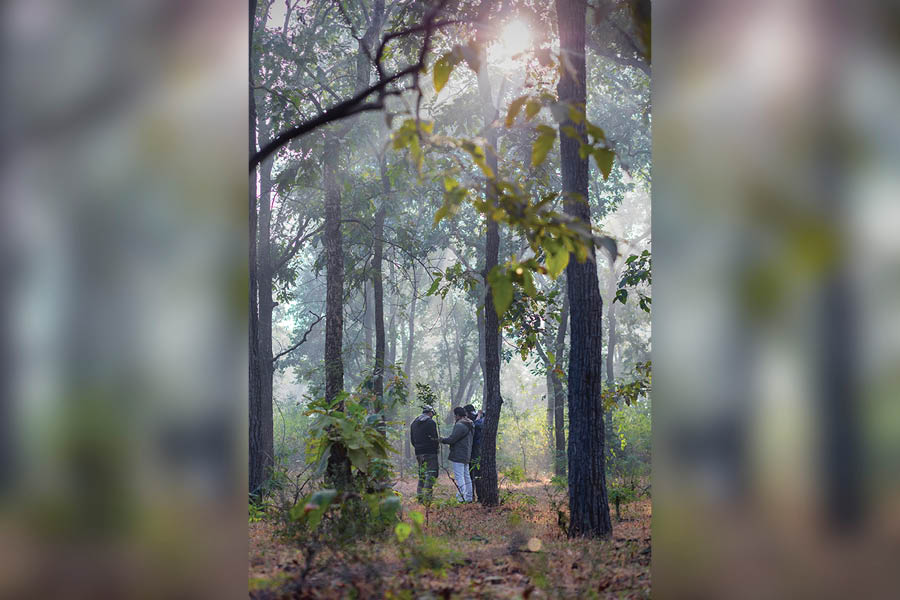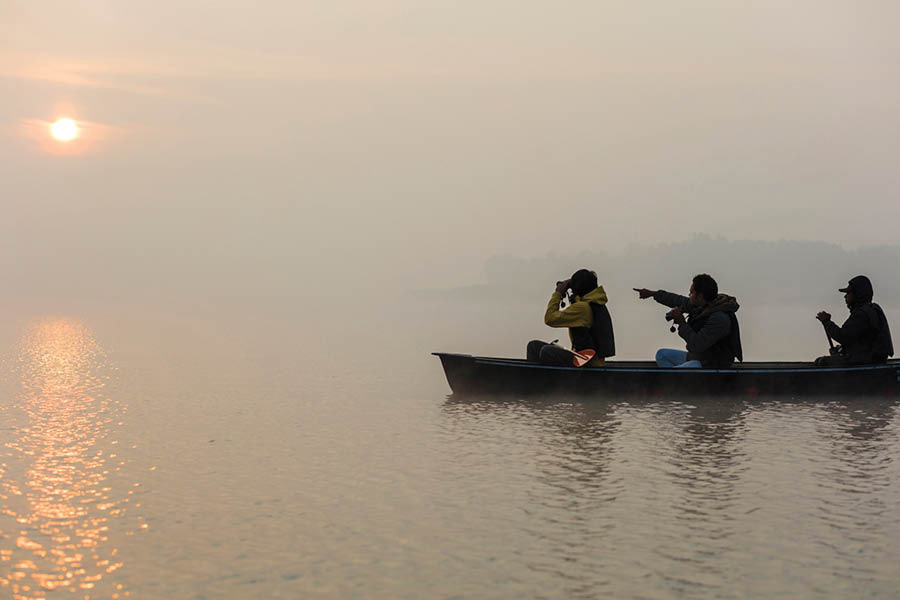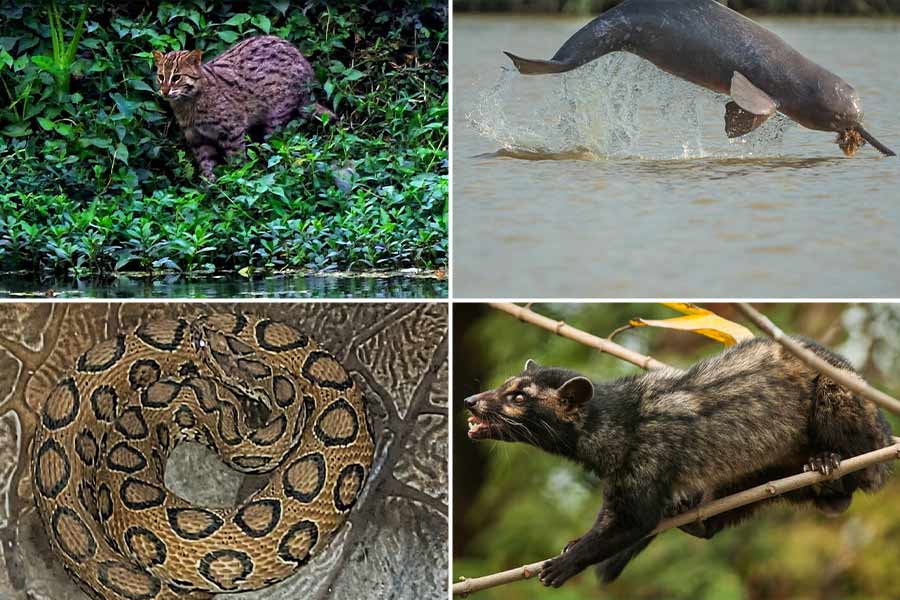It took us three hours to reach our lodge near Satpura National Park from Bhopal airport. We were immediately steered to the lodge’s curiously-shaped community space for the guests to meet, exchange field notes after a jungle safari and unwind in the evening with a drink.
After a sumptuous lunch, we set off on our afternoon game drive. The warm autumn sun spread its diffused glow over the lush emerald landscape of pristine deciduous forest with stretches of meadows and tiny rivulets. Satpura is a biodiversity haven, home to leopards, wild boars, bears, four-horned antelopes and the very elusive Indian giant squirrel. This is an ornithologist’s paradise — the ancient forest on the serene banks of Denwa river that quietly cuts through Satpura National Park houses more than 300 types of birds, including wetland species. The diverse terrain of Satpura remains a link between the Eastern Himalayas and the Western Ghats facilitating both summer and winter migration of a vast avian fleet that includes northern pintails, bar-headed geese and ruddy shelducks.

Few other forests of India offer the chance of a nature walk like Satpura.
“Stop the car,” – Omkar, our resident naturalist, told the driver. His trained ears heard the distant distress call of a peacock. The jungle had suddenly gone deadly quiet and this eerie silence meant that the big cat was lurking somewhere very close to us. A few minutes passed by in complete silence. We spotted a hind with her fawn flashing past the undergrowth. A band of langurs sitting motionless on a small clearing charged themselves to the top branches of the towering teak and mahua trees. “The tigress is moving away,” – Omkar motioned the driver to follow a dirt track. As the car manoeuvred its way over the parched leaves and twigs, Omkar showed us a set of footprints on the sandy-red soil. “Pugmarks, and they are very fresh,” – he said.
Off we went down the pugmarks trail. We spotted herds of sambars gracefully crossing the leafy jungle corridor, a flamboyant peacock taking a flight in a flurry of colours and forms, and even a couple of wild boars snuggling their portly frames into a thick hedge, but the tigress chose it as a no-show day. As the strong Deccan sun gradually turned mellow, our safari vehicle retraced its way back to our lodge.

Country boat ride is an option to explore the backwaters of Denwa river.
Over the delectable three-course dinner, we learnt about the sustainability initiatives of our lodge. All the luxury cottages have been built using local and natural materials and all the employees of this jungle resort, including women, are local villagers. “They have been handpicked and trained to work here in various departments and even women of the villages work as guides in the core area of Satpura,” Omkar informed. One of the staff members - a local village lad - accompanied us with a torch to our cottage perched on a grassy incline. A gurgling stream gently flowed just below the slope. I spotted a herd of hog deer ambling on its reedy banks, their graceful contours shimmering in the pale moonlight.
We woke up to a golden dawn and hurriedly got ready for the morning backwater cruise. The jeep galloped through the misty morning to the banks of Denwa river. Laxmi had joined us. A local tribal girl in her early-20s, she has undergone training as a naturalist. Together, we set sail on the shimmering waters of Denwa, a wisp of fog hovering above its placid waters.
As our powerboat glided close to the river banks, we spotted herds of sambars grazing in the forest, a couple of marsh crocodiles lazing in the morning sun and (with some help from Laxmi and Omkar) the rare sight of a giant squirrel, fleeting in and out of the thick foliage of a tree with its shiny, rust-coloured coat and a long, bushy tail. We delved deeper into the alluring, watery world of the backwaters and I understood why Satpura is a birder’s delight. In between helping myself with the goodies from the breakfast hamper, it was a delight to watch some of Satpura’s riverine residents such as the Osprey, a large brown-winged bird of prey, a few winter guests like northern pintails and great cormorants and the red-billed Indian skimmer that suddenly plummeted into the water, caught a small fish and glided over the glassy surface of the river.

After the Denwa backwater cruise, it was time for a nature walk through the woodland. The tread through the jungle was an exhilarating trail with the mushy bed of leaves under our feet and the thick overhead canopy of towering sal and teak forest. Omkar even ventured a little off-road to spot a bevy of butterflies fluttering in a melange of colour near an undergrowth. We passed by a group of playful langur monkeys basking in a clearing in the forest and a brilliantly-coloured jungle fowl skittering across the jungle path, searching for insects. We crossed the dry bed of a seasonal stream to reach our vehicle. Omkar silently pointed to the tree where the jeep had been parked. Deep scratch marks ran through its thick, dark trunk. “This is how tigers mark their territories,” Omkar said, before adding “this is the tigress’ handiwork, not more than an hour ago.” We hopped into the olive green safari vehicle and turned back towards our lodge through the undulating terrain, now looking ethereally beautiful, bathed in the mellow morning light.

